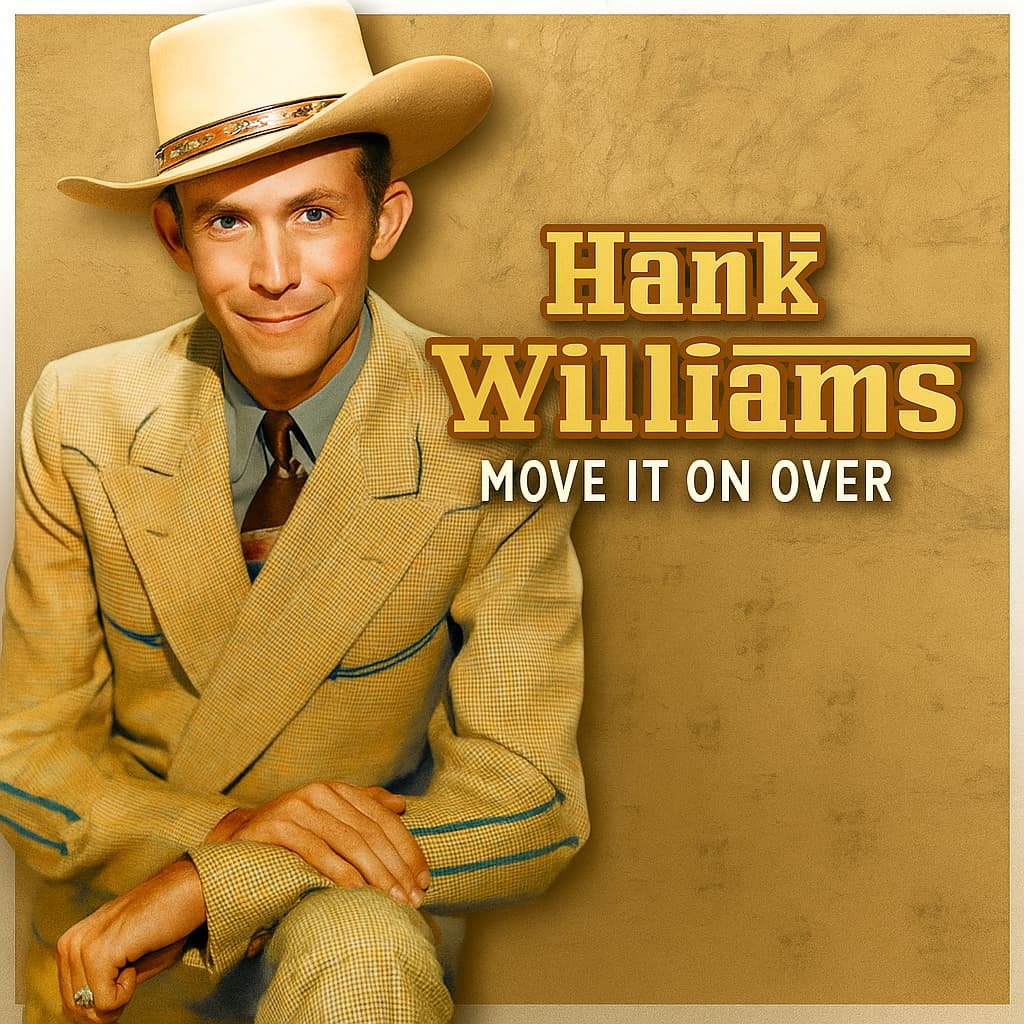
A Rowdy Anthem of Spousal Strife and the Honky-Tonk Escape
When the needle drops on Hank Williams‘s “Move It On Over,” a jolt of raw, unapologetic energy shoots through the speakers. It’s a song that encapsulates the very spirit of the honky-tonk: a place of refuge, a sanctuary from domestic discord, and a stage for some of the most vibrant, and often painful, stories in American life. Released in 1947 as a B-side to “I’m a Long Gone Daddy,” this track, penned by Williams himself, didn’t immediately hit the top of the charts in the way his later ballads would. However, its staying power is undeniable, cemented by its rollicking tempo and a story as old as marriage itself. While it didn’t secure a #1 spot, it became a staple on juke boxes across the South, a testament to its relatability and infectious charm. Its gritty realism struck a chord with a generation of listeners grappling with the realities of post-war life and domesticity.
The story behind “Move It On Over” is steeped in Williams’s own turbulent personal life, a pattern that would define much of his career. It’s said the song was born from a particularly heated argument with his first wife, Audrey Mae Williams. The tale, a mix of folklore and reality, suggests that Hank, after a night of drinking and carousing, returned home to a locked door and a furious wife. The song’s lyrics, delivered with a mischievous and unapologetic smirk, paint a vivid picture of the ensuing conflict. “Move it on over, old dog,” he practically growls, “a new pup is movin’ in.” This isn’t just a song about a fight; it’s an anthem of defiance, a declaration of independence, however temporary, from the confines of domestic life. It’s the sound of a man grabbing his hat, slamming the door, and heading back to the neon lights and sawdust floors of the nearest honky-tonk.
But the song’s meaning goes deeper than a simple marital spat. It’s a reflection of a broader social dynamic, a snapshot of a time when gender roles were strictly defined and the home could often feel like a battleground. Williams, with his signature blend of wit and vulnerability, uses the song to explore the tension between a man’s desire for freedom and his obligations to his family. The “old dog” isn’t just his wife; it’s the old, predictable life he’s trying to escape. The “new pup” is the wild, untamed part of himself that longs for the freedom of the open road and the camaraderie of the barroom. It’s a song that speaks to the universal struggle between duty and desire, a theme that has resonated with listeners for generations.
For those of us who grew up with this music, the opening chords of “Move It On Over” are a portal to a different time. They evoke memories of dusty jukeboxes in dimly lit bars, the smell of cigarette smoke and cheap beer, and the sound of laughter and heartbreak echoing through the night. It’s a song that doesn’t just tell a story; it creates an entire world. It’s the soundtrack to a thousand forgotten nights, a reminder of the simple pleasures and complex pains of a life lived on the fringes. As the years have passed, the song has lost none of its power. It remains a timeless testament to the enduring appeal of Williams’s music, a raw, honest, and utterly unforgettable chronicle of the human heart in all its messy glory. It’s a song that reminds us that even in the midst of conflict, there is always a place for a good tune, a cold drink, and a little bit of defiant fun.